
This page last revised 23 August 2006 -- S.M.Gon III
Introduction
Ecoregion
Conservation Targets
Viability
Goals
Portfolio
TNC Action Sites
Threats
Strategies
Acknowledgements
▫
Tables
Maps & Figures
CPT Database
Appendices
Glossary
Sources
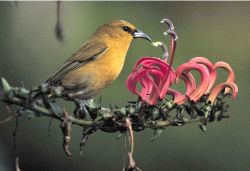
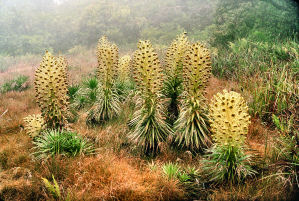
Stratification Units
Ecoregional biodiversity distribution
Biological diversityin the Hawaiian Islands is spread among the main high islands because ofisland-level endemism. We cannot choose to work on only one or two islandsand consider our mission successful. This is because each island containsspecies unique to that island. For example, of 1,050 described taxa of nativeflowering plants, there are three found only on Ni‘ihau, 225 restricted toKaua‘i, 157 found only on O‘ahu, 40 known only from Moloka‘i, 12 unique toLāna‘i, 96 found only on Maui, 2 reported only from Kaho‘olawe, and 106 knownonly from Hawai‘i (Wagner et al 1990).
Accountingfor all of these island-level endemics, we are left with fewer than half the floweringplant taxa (409) that show wider distributions. Fewer than 150 can be foundon all six of the higher main islands. The situation is even more pronouncedamong invertebrates, which comprise the majority of terrestrial species-level diversity,and show remarkable diversification and geographic endemism even within asingle island setting. It becomes quickly clear that multiple examples ofecological systems across the archipelago are required to adequatelyrepresent species level biological diversity.We ensure this cross-ecoregional coverage by planning forredundant representation of major conservation targets, such asecological systems, natural communities, and speciesconcentrations.
(continued next column)

Stratification:
The insular nature of the
Kaua‘i Unit – The islands of Kaua‘i and Ni‘ihau. Kaua‘i in particularis a hotbed of endemic biodiversity. The channel separating Kaua‘i from therest of the archipelago is the widest, leaving the oldest high island most isolated andbiologically distinct.
O‘ahu Unit – The
Hawai‘i Unit –The large, geological youngest
It is fortuitous that the stratification units above alsocorrespond with political (county level) units, so that overarching strategiesneed not require multijurisdictional agreements. With the exception of MauiNui and Kaua‘i units, the stratification units also correspond with individualislands. The individual islands also form meaningful stratification subunits.

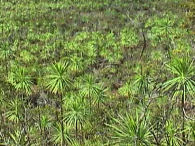
This shrubland of the silversword relative iliau (Wilkesia gymnoxiphium) is restricted to the Kaua'i Stratification Unit.
Map of Stratification Units:
Four stratificationunits reflect the biogeography of the islands: Older islands (Kaua`iand O`ahu are botanically rich, while the Maui Nui cluster sharesimilar age and biology. The youngest and largest Island of Hawai`i isalso biologically distinct.
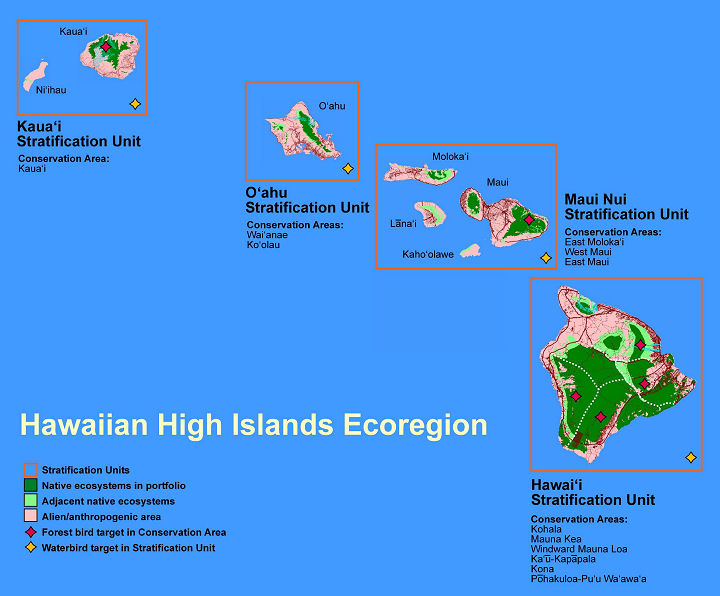
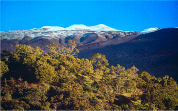
Target distribution within thestratification units above is not even. For example only the islands of

For example, althoughoccurrences of the Lowland Wet Ecological System occur on six of the eight islands, on onlythree (Kaua‘i, Maui and Hawai‘i) are there large,exemplary occurrences that emerge as highest priority action sites for protection ofthis conservation target.
Exemplary
